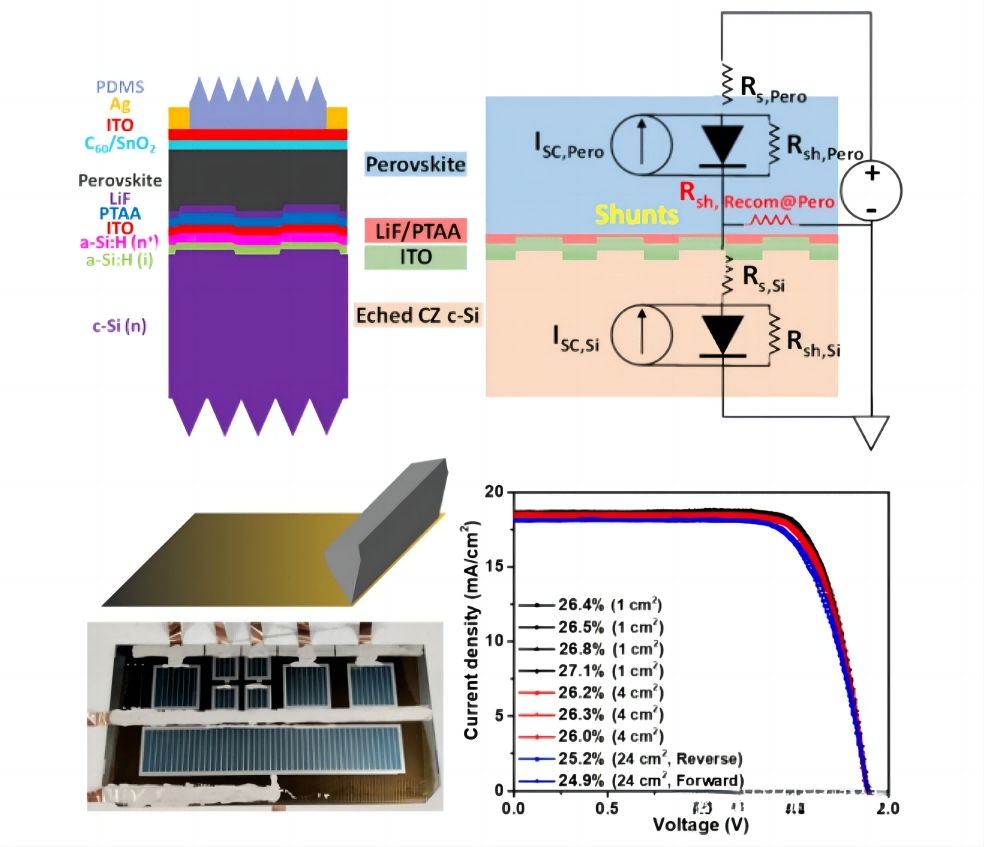Researchers at the University of North Carolina at Chapel Hill and Arizona State University designed a large-area perovskite-silicon tandem solar cell with an open area of 24 square centimeters and achieved a steady-state efficiency output of 25.1%.

Current-voltage curve of a perovskite micromodule with a pore area of 42.9 square centimeters, image: University of North Carolina Church Hill
The team set out to overcome the shunt problem, a common problem when perovskite solar technology scaled from small-area cells to large areas. "Shunts" in photovoltaic cells create alternative pathways for the charge generated by solar energy, resulting in a loss of efficiency. Shunt resistance reduction is associated with many forms of module degradation and failure, including degradation caused by hot spots and potentials.
The scientists built a 24-square-centimeter tandem cell with a lithium fluoride (LiF) intermediate layer placed between a hole transport layer (HTL) made of polytriarylamine (PTAA) and a wide bandgap (WBG) perovskite absorbing layer. This interlayer is reported to be key to improving physical contact at the buried interface and mitigating shunting, with PTAA and WBG perovskite layers coated by scrapers.
"Suboptimal interface contacts with a large number of voids can serve as a triage pathway," the scientists say in their work. "The discovery that LiF interlayers can avoid the formation of interfacial voids is one of the possible reasons for reducing laminated shunting."
The researchers deposited other layers of the tandem cell through sputtering (PVD), thermal evaporation (TE), and atomic layer deposition (ALD). They also tested three different bottom solar cell configurations.

Tested under standard lighting conditions, the efficiency of the 24 square centimeter tandem cell was 25.2%, the open-circuit voltage (Voc) was 1.89 V, the short-circuit current density (Jsc) was 18.1 mA/cm2, and the fill factor (FF) was 0.736.
"To our knowledge, this is one of the most effective two-terminal tandem devices reported in the literature, with an area of more than 10 square centimeters," the researchers said.
"The method developed here is valuable for developing efficient, reproducible and large-scale perovskite-silicon tandem cells," the scientists said.